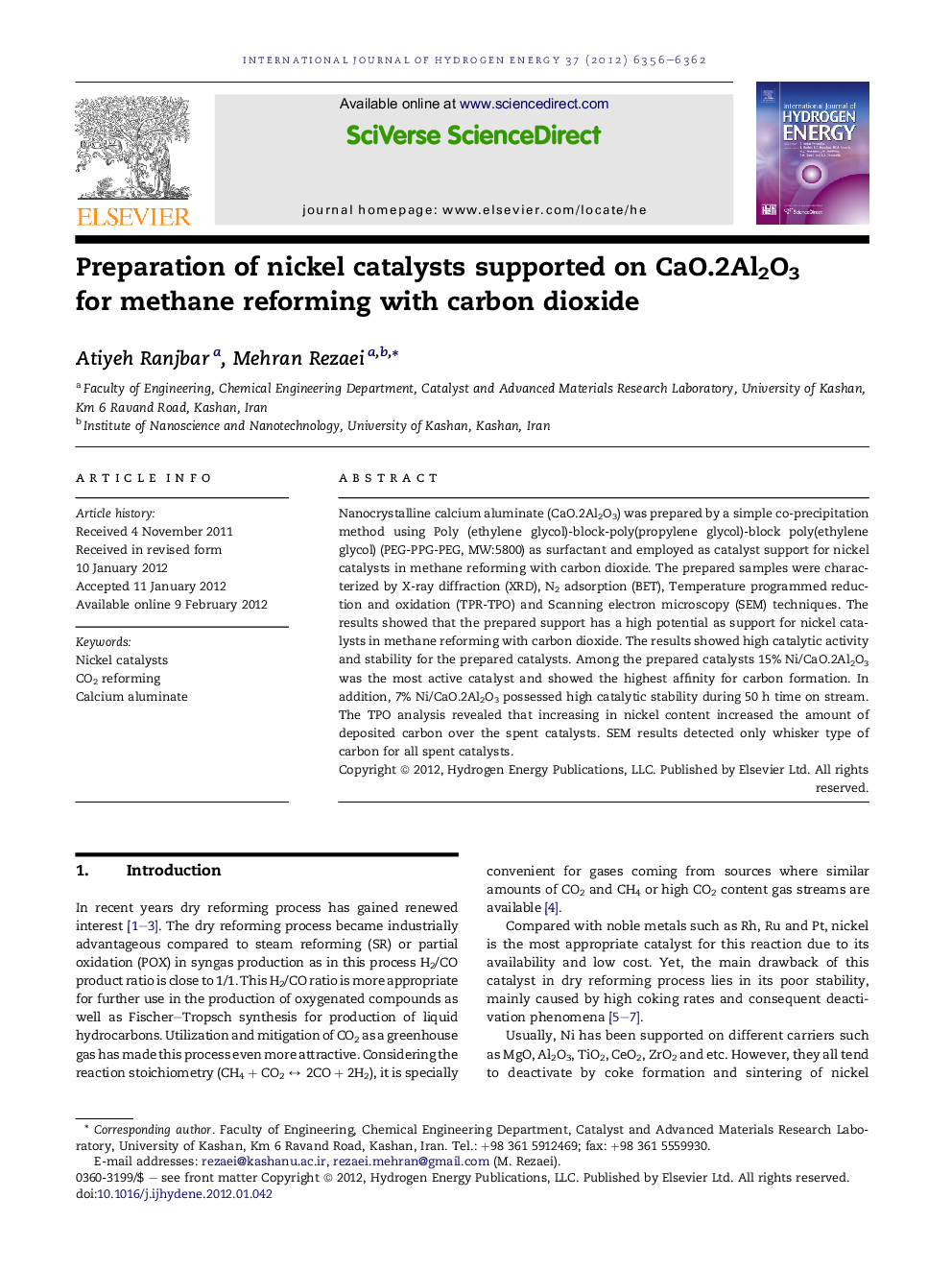| Article ID | Journal | Published Year | Pages | File Type |
|---|---|---|---|---|
| 1276575 | International Journal of Hydrogen Energy | 2012 | 7 Pages |
Nanocrystalline calcium aluminate (CaO.2Al2O3) was prepared by a simple co-precipitation method using Poly (ethylene glycol)-block-poly(propylene glycol)-block poly(ethylene glycol) (PEG-PPG-PEG, MW:5800) as surfactant and employed as catalyst support for nickel catalysts in methane reforming with carbon dioxide. The prepared samples were characterized by X-ray diffraction (XRD), N2 adsorption (BET), Temperature programmed reduction and oxidation (TPR-TPO) and Scanning electron microscopy (SEM) techniques. The results showed that the prepared support has a high potential as support for nickel catalysts in methane reforming with carbon dioxide. The results showed high catalytic activity and stability for the prepared catalysts. Among the prepared catalysts 15% Ni/CaO.2Al2O3 was the most active catalyst and showed the highest affinity for carbon formation. In addition, 7% Ni/CaO.2Al2O3 possessed high catalytic stability during 50 h time on stream. The TPO analysis revealed that increasing in nickel content increased the amount of deposited carbon over the spent catalysts. SEM results detected only whisker type of carbon for all spent catalysts.
► Ni/(CaO.2Al2O3) Catalysts with various Ni loadings were active in dry reforming. ► 15% Ni/CaO.2Al2O3 was the most active catalyst. ► 7% Ni catalysts showed higher activity and lower carbon formation in comparison with 10% Ni. ► 7% Ni possessed high catalytic stability during 50 h time on stream. ► 15%Ni showed the highest carbon deposition.
